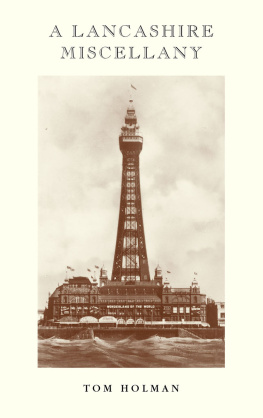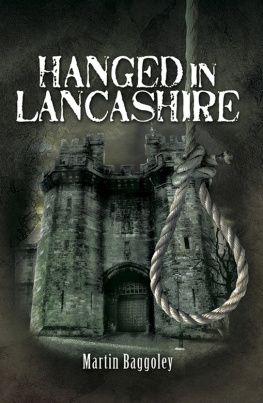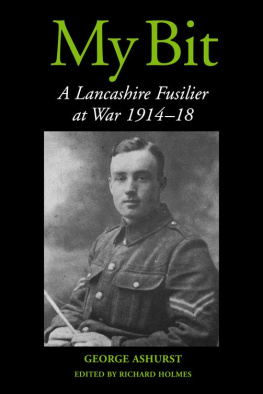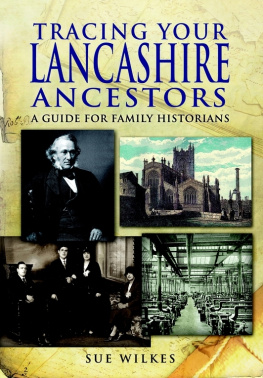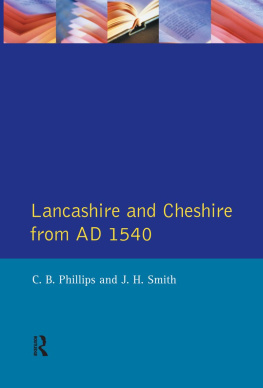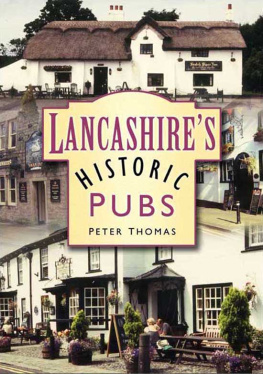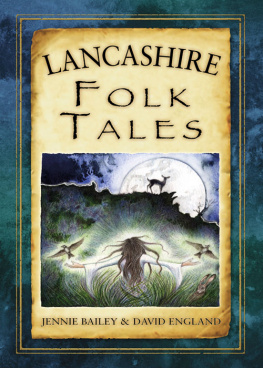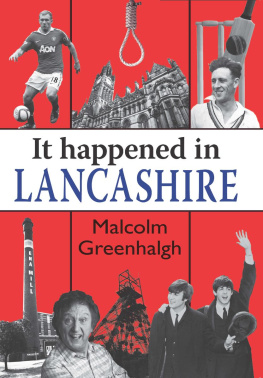A LANCASHIRE MISCELLANY
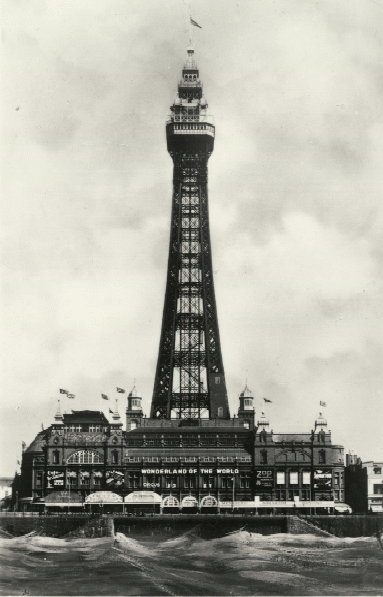
A LANCASHIRE MISCELLANY
TOM HOLMAN

For Sam
Frances Lincoln Limited
4 Torriano Mews
Torriano Avenue
London NW5 2RZ
www.franceslincoln.com
A Lancashire Miscellany
Copyright Frances Lincoln Limited 2010
Text copyright Tom Holman 2010
First Frances Lincoln edition 2010
All rights reserved.
No part of this publication may be reproduced, stored in a retrieval system, or transmitted, in any form, or by any means, electronic, mechanical, photocopying, recording or otherwise without the prior written permission of the publisher or a licence permitting restricted copying. In the United Kingdom such licences are issued by the Copyright Licensing Agency, Saffron House, 610 Kirby Street, London EC1N 8TS.
A catalogue record for this book is available from the British Library.
ISBN 978-0-7112-3093-4
Printed and bound in Hong Kong
1 2 3 4 5 6 7 8 9

A THREE-MINUTE HISTORY OF LANCASHIRE
Celts, Britons, Romans, Anglo-Saxons, Vikings and the Normans - all these people and more have helped to shape and strengthen Lancashire over the course of its long, turbulent and fascinating history.
Plenty of evidence of Stone Age life has been found across the county, and the fertile Ribble Valley in particular has signs of inhabitation going back at least ten thousand years. Early hunters and gatherers would have found the area densely forested and wild, but swathes of it were cut down to make way for agriculture after the Celts arrived in Iron Age Lancashire in the shape of two related tribes: the Brigantes, who tended to settle in the north, and the Carvelli, who gathered along the coast.
The Romans arrived in Britain in AD 43, but did not establish themselves in Lancashire until the 70s, when they built their first fort at Ribchester. More settlements followed at or near what are now Manchester, Lancaster, Kirkham, Warrington and Wigan, and the roads they built between these places formed the basis for the countys transport infrastructure.
The Celtic people who settled again across the county after the departure of the Romans in the early 5th century now developed distinct settlements, the names of which evolved into many modern-day Lancashire towns and cities. Next came the Anglo-Saxons, and by the 7th century Lancashire was part of both the Kingdom of Northumbria and, from south of the River Ribble, the Kingdom of Mercia. The Saxons soon converted to Christianity, and traces of their religion including distinctive crosses can be seen on a handful of church sites today.
The period of calm and security that followed was ended by the arrival of the Vikings, who imposed themselves on the area either by force or alliance with the now-subjugated local rulers. But having settled in, they also advanced agriculture and trade in the region and, like the Anglo-Saxons, added their influence to its place names and institutions. By the time of the Norman Conquest in 1066, Lancashire was roughly divided into a handful of regions, parcelled up by King William for his barons. The new ruler chose Lancaster as his headquarters, and by the middle of the 12th century the area was becoming known as the county of Lancashire. A century later, Lancashire became an earldom and then, in 1351, a dukedom. It was now a county palatine, meaning that it had royal powers and could develop its own ruling and legal structures with some independence from the King.
Once tensions between the Normans and Anglo-Saxons had eased, the county began to develop something like its modern character, with markets helping towns to grow in size and land enclosures delineating the countryside. Stability in the region was again interrupted by the Wars of the Roses from around 1455 onwards. Mostly because of its geographical position, Lancashire was somewhat isolated from the rest of England over the next few hundred years, and its sense of separation grew during the Reformation, when large parts remained defiantly Catholic despite the adoption of Protestantism elsewhere. Divisions in the county grew wider with the English Civil Wars, and Lancashire was host to several major battles between Royalists and Parliamentarians through the 1640s.
Afterwards, Lancashire developed further as a largely rural county until the Industrial Revolution brought explosive change from the late 18th century onwards. Towns sprawled to accommodate new manufacturing and mining industries, ports grew as trade flourished, and new rail links brought previously remote areas of the county much closer together. While a handful of Lancastrians made fortunes, millions more suffered in dreadful conditions at work and home. These slowly improved over the 19th century, and the increased money and leisure time fuelled the growth of seaside resorts like Blackpool.
The subsequent decline of its adopted industries, plus the loss of life and upheaval from two world wars, threatened to bring Lancashire to its knees. But new industries and the effect of post-war immigration have created yet another Lancashire - a county that juxtaposes dramatic rural beauty and vibrant urban life like few others in England. Its boundaries have been endlessly tweaked by reorganisations of local government, not least in 1974 when the modern administrative county was substantially reduced in size. But most Lancastrians aware of their history identify with the county palatine as it was at its creation - and their sense of loyalty and love of Lancashire is as powerful as it has ever been.

LANCASHIRE FOOD HOT POT
No meal is more evocative of Lancashire than the traditional, hearty and satisfying Hot Pot.
At its simplest, Hot Pot is a cheap, easily prepared stew of lamb or mutton and onions, topped by slices of potato. Its exact origins are unknown, but it probably has its roots among the mill and factory workers of the region who might assemble it in the morning and put it on to cook slowly all day, giving them a steaming hot meal ready for their return at the end of their shift. Cooked Hot Pots - the name refers to the heavy dish in which it was cooked - would also be kept warm in blankets for a picnic later in the day, perhaps at work in factories, mines or fields, or on days out at the races.
Perhaps because of its humble origins and cheap ingredients, Lancashire Hot Pot has sometimes been looked down on as a dish, but the rising interest in local food has brought it firmly back into fashion, and it can now be found on plenty of pub and restaurant menus in Lancashire and beyond. Because it is so easy to prepare in advance, it is also a convenient supper with little washing up for anyone who - like the mill workers of the past - is too busy or tired to prepare anything from scratch at the end of a long day.
Like all cherished local dishes the precise recipe for Lancashire Hot Pot is the subject of intense debate, and there are as many variations on the basic formula as there are cooks in the county. Lambs kidneys, slices of black pudding or oysters are sometimes added to the meat, vegetables like carrots, turnips or leeks may be used to pad out the stew, and herbs or red wine added to enhance the gravy. This version is fairly true to the traditional Hot Pot.

